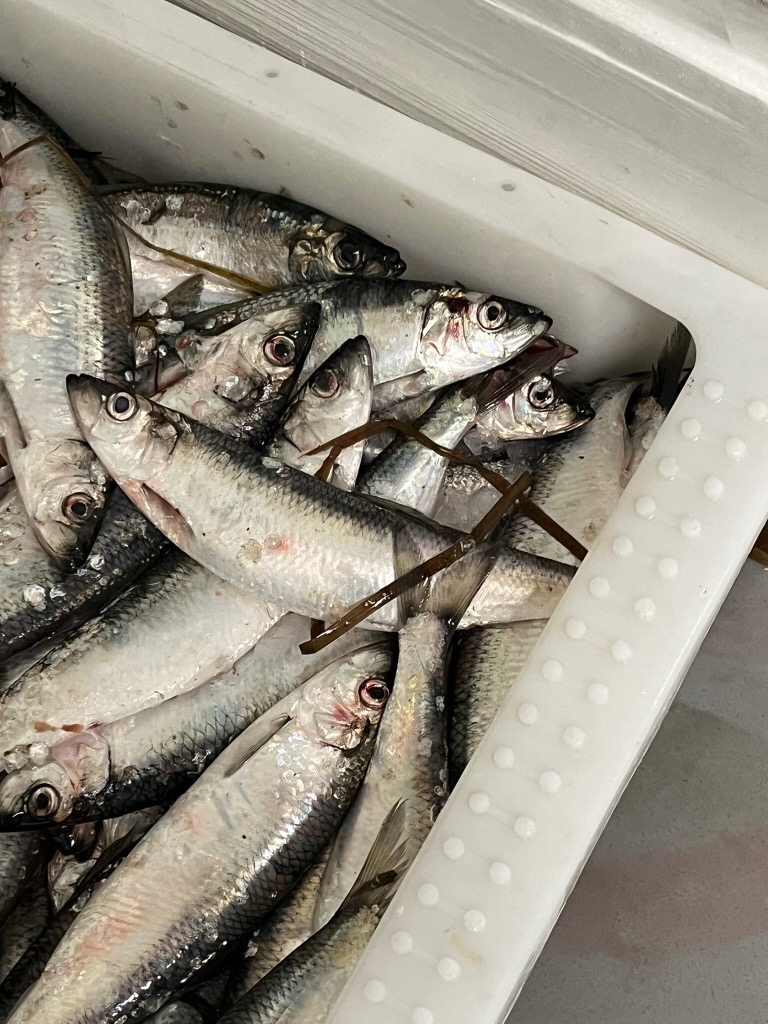Herring is good – war is bad

That means we have to get our herring from the pound net fishermen in Skagen or Korsør if we want proper autumn herring. But that fishery is patchy, which makes it hard for the fishmonger to keep herring on hand for chefs – even though there are loads of herring swimming just outside the door. Strange, you think? Yes, it really is strange.
The reasons are a bit complicated, but the main one is this: the herring quotas are owned by the big pelagic vessels, which catch them as bycatch when targeting sprat in the Baltic Sea. Boom! There are no longer any small Danish boats with quotas to fish herring gently in the Øresund.
So what’s the deal with these herring anyway?
Let’s take a closer look.
Herring are found all across the northern Atlantic, from South Carolina to Svalbard. In Denmark, we basically have two stocks: the North Sea herring, which spend their whole lives in the North Sea, and the Western Baltic herring, which live in the inner Danish waters and the Baltic.
Most herring stocks are migratory and cover long distances. For example, Norwegian spring-spawning herring can swim all the way to Iceland to feed – a round trip of about 1,600 kilometers. Danish herring are no different. North Sea herring move between different parts of the North Sea, while Western Baltic herring migrate back and forth between the western Baltic and the Skagerrak.
These migrations follow an annual rhythm, depending on the age and life stage of the fish. In summer, young North Sea herring (0–1 years old) gather in the shallow eastern North Sea – often close to the Danish west coast, into the Skagerrak and Kattegat. In winter, they move further out toward the central North Sea. As they get older (from age 2 and up), they’re more often found in the western North Sea – and the older they are, the further north they go. But even the older fish return to shallow waters in summer.
Western Baltic herring usually begin their annual migration when they’re 1–2 years old. In summer, they swim north to Kattegat and Skagerrak to feed. Later in the year, they move south again to the southern Kattegat and the Øresund to overwinter. It’s mainly the stock spawning around Rügen that overwinters in the Øresund – some stay right through to March before returning to their spawning grounds.
That’s why we have these fantastic herring right on our doorstep, exactly when they’re at their very best – but we’re not allowed to catch them…
A Glimmer of Hope
And just as we’re sitting here sobbing, there’s a glimmer of hope on the horizon. The fishery advice released last year for the 2025 season included a clause allowing small-scale vessels to target herring with gillnets and other passive gear – to help maintain a small-scale coastal fishery. And that’s good news!
Because how wonderful would it be to once again have a gentle fishery for one of the species most synonymous with the Øresund region. Right now, plans are being drawn up for how that small-scale fishery should look, and we strongly expect to have beautiful Øresund herring to sell in October.
Want more updates?
Keep an eye on the app for the latest news.
Want to know more?
Contact us to get set up with with the season’s best fish and shellfish.

Podcast: Fiskerikajen Update
You can also catch our regular seasonal updates as a podcast.Listen here

